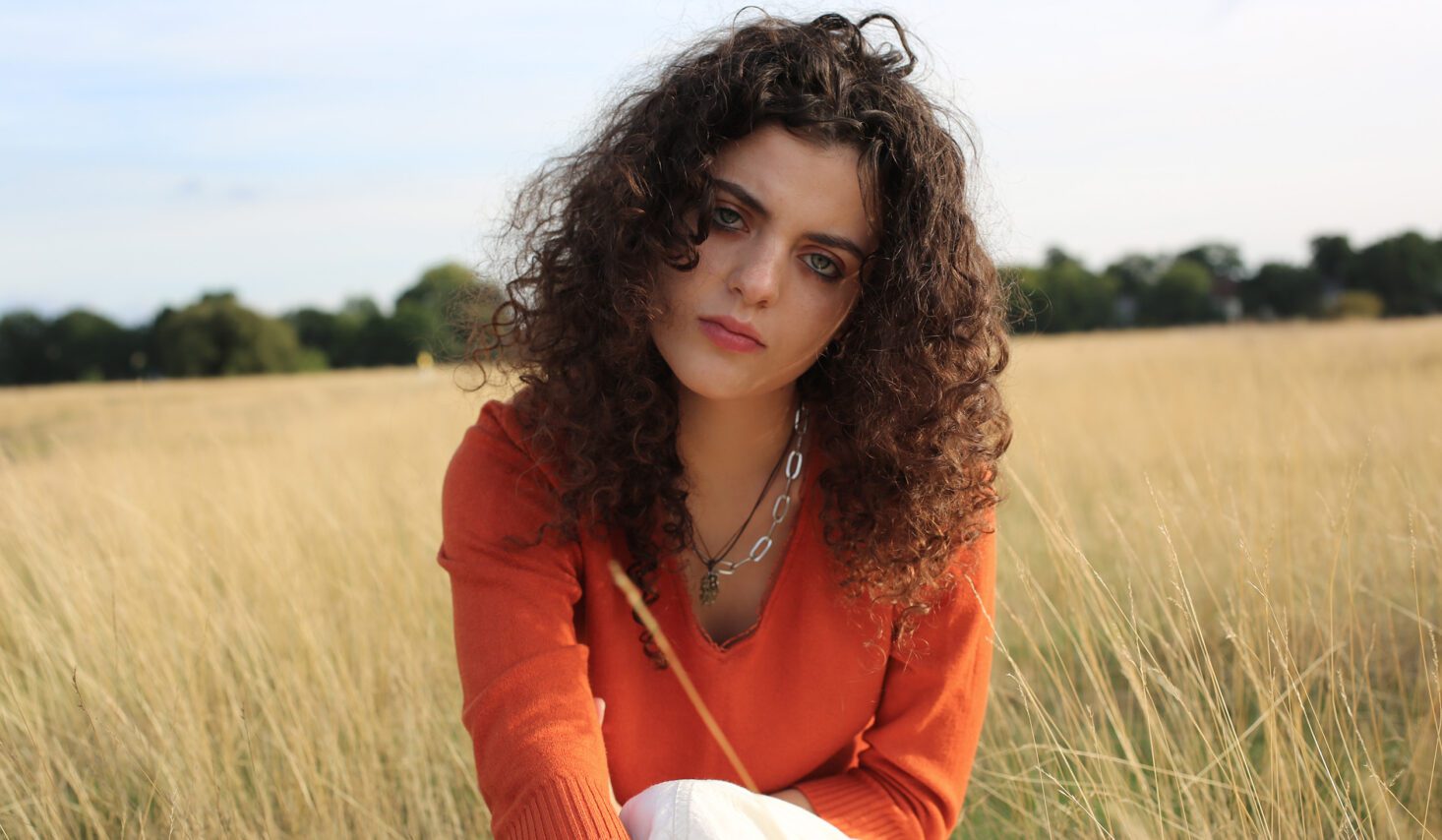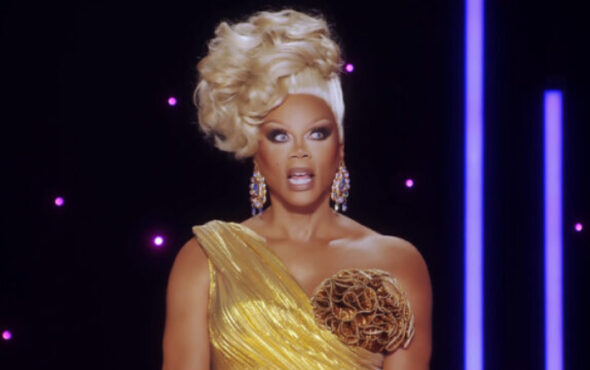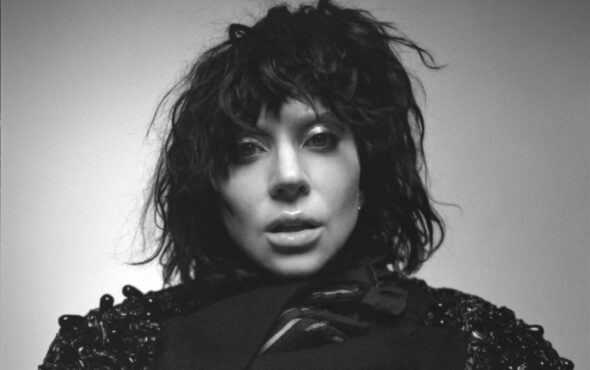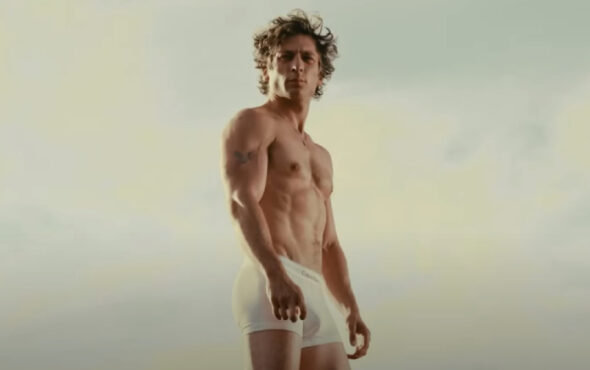
Phoebe Axa is a rising singer-songwriter from London who, at just 21, has already played a sold-out headline show at Omeara, as well as sets at Latitude and Live at Leeds.
My Toxic Trait is lifted from Phoebe’s highly anticipated second EP, Panic. You can watch the accompanying music video his first exclusively on GAY TIMES. The singer has also written this special essay about the importance of authentic queer female representation in media, and how her visual for My Toxic Trait is the representation she’d liked to have seen as her younger self.
Accessing relatable sapphic media growing up queer was a struggle. Once we sift through the male gaze, the remaining options tend to fuel a gruelling internal misunderstanding of ourselves and what we ‘should’ have been. Historically, lesbians on TV have been drawn up from the same recycled stereotypes; the hypersexualised ‘lipstick lesbian’ or the ‘masc’, purely there for ‘laughs’ and ‘drama’, with no room for anything in between. This space lacks diversity. On the chance that we connect with one of these heavily stereotyped depictions, we are met with disappointment when female queer characters are almost immediately ‘killed off’ or discarded with a bitter end. Either that, or they remain disposable side chatter to the straight lead or a tick box in a plot meeting diversity demands. They are merely characters based on tropes rather than anything with depth. Here lies the subconsciously moulded idea that we will always have to ‘bury our gays’. Our characters will always lack substance, be side-lined by the lead and overall, be invisible.
Young people need, want and aspire to role models. They are crucial in terms of self-awareness, aspiration, and identity; the teenage brain is plasticine, impressionable and in need of affirmation – these are the years we need someone to look up to the most. Whilst the queer landscape regarding representation is seemingly more positive in 2022, I felt the absence of a queer female role model growing up. It wasn’t until I saw Hayley Kiyoko’s Girls Like Girls video, that I felt any sort of acceptance towards my identity. I was thirteen and wondering if I needed to cut my hair, dress in a masculine fashion or change my interests to fit the stereotypes I did come across; so, seeing two feminine presenting woman-loving-woman characters even interact blew my mind. In reality, I needed to understand that ‘queer’ didn’t have just one image and that there was someone out there similar to me. Every young queer person needs to see queer characters flourish, have purpose – see them have happy endings, or be crucial to a plot in a normal environment, rather than a sub-plot, a digression, or a frivolous whim. There is a need for role models that have personal growth and transformative development, regardless of appearance or background. There has to be range.
Sometimes we underestimate the impact of simple representation; an insight into woman-loving-woman relationships in non-heightened environments should hold importance. We need journeys that aren’t burdened with intense tragedy or over-sexualised to the point where they feel inaccessible. This approach would remove the taboo factor and avoid harmful tropes; it would open a more universal discussion on experience. Casey and Izzie of Netflix’s ‘Atypical’ are an example of a delicate exploration of youthful love, following a steady reveal of self-identification, one that is not rushed, objectified or affected. We are shown that queer love can be tender, slow and empathic. This is a different path to the often-anticlimactic stereotype of ‘lesbians moving too fast’ we have been fed in the past. It feels human. Authentic. It isn’t for show. Dodie’s ‘Sick of Losing Soulmates’ video, is another focus on the natural ups and downs of life that are visited in any relationships, not just queer ones – the universal idea of inevitable growth and change; it isn’t riddled with stereotype. We are moving towards deeply layered narratives creating a more organic, relatable, and validating landscape.
The music I wrote growing up was thickly laced with ‘queercode’ to say the least. In 2015, Halsey and Hayley Kiyoko sat at the heart of my relationship with openly queer pop and alternative music. Their articulation gave birth to mine – their comfortability soothed my internalised turbulence and constant need to censor myself. Halsey’s Strangers using female pronouns and depicting a ‘woman-loving-woman’ relationship felt liberating. Girl In Red entering the scene with I Wanna Be Your Girlfriend felt bold and open. Kehlani’s voice on Honey felt daring and actively worked on dismantling the taboo. These songs felt like an explosion of emotional support in coming to terms with sexuality and identity for me. These artists were actively embracing their personal voices at a time when relatable representation felt barren and disconnected. As a result they began to creak open a safe and transparent ray of light in mainstream music – a place to ask questions, to feel seen and as a whole, a place for queer women and people to start a legacy. This felt organic, not industry orchestrated. A representation emerging away from the male gaze and far from the tragic ‘bury your gays’ trope (one we have seen since the 19th century), – it was straight from the source and the source was queer.
We need to preserve and expand this ray of light that has been created for independent queer projects. It needs to remain untampered with, authentic, connecting with real people and the stories they have to tell. They need to be truthful and ungilded. Providing young queer women and people with this type of positive representation in the years that matter most will play a key part in self-awareness, education and most of all, self-acceptance.
The My Toxic Trait video is what I would go back and give to my teenage self. A pure form of youthful love, with its realistic ups and downs – no stereotypes, just two young women learning to love.
Phoebe Axa’s new EP, Panic, is available to stream and download now.


